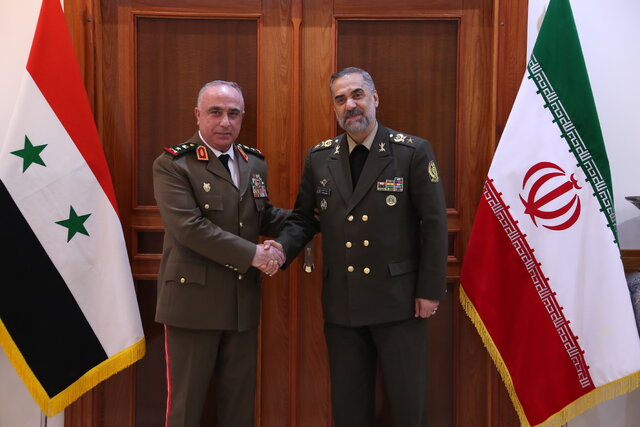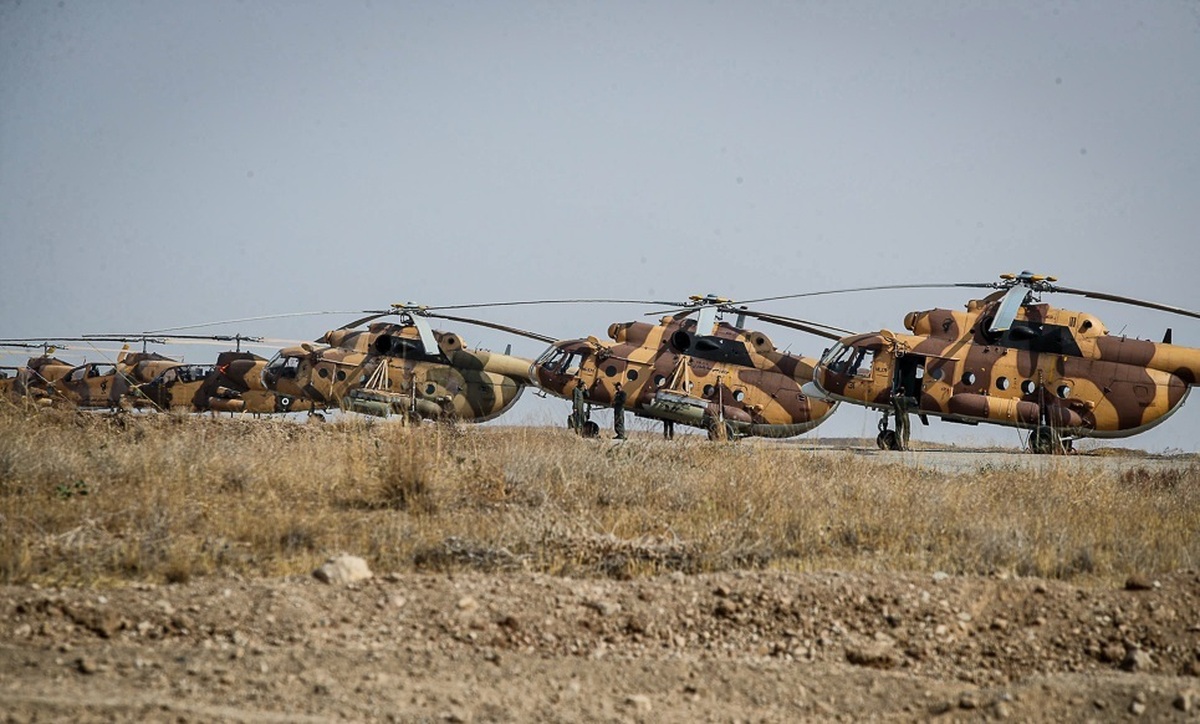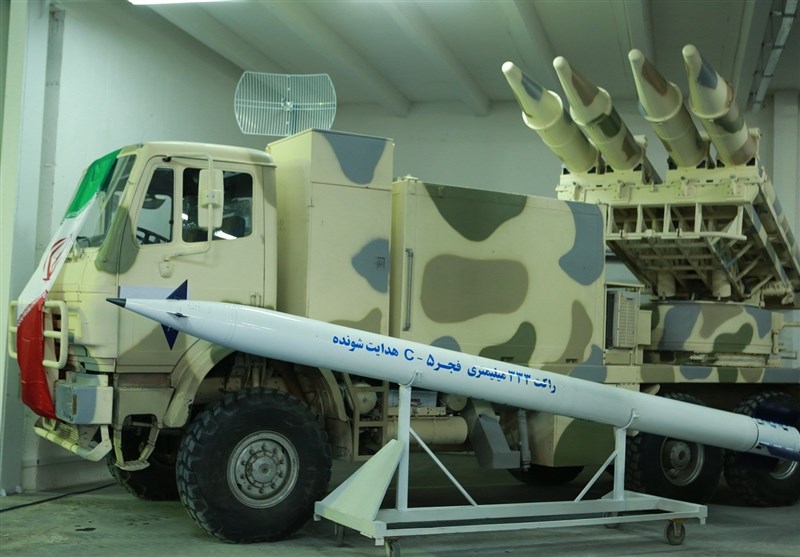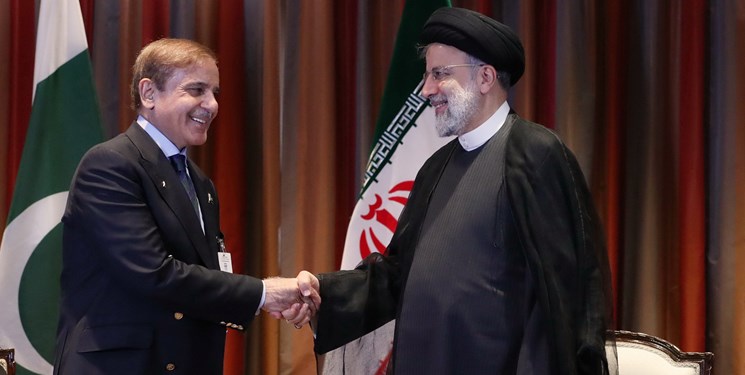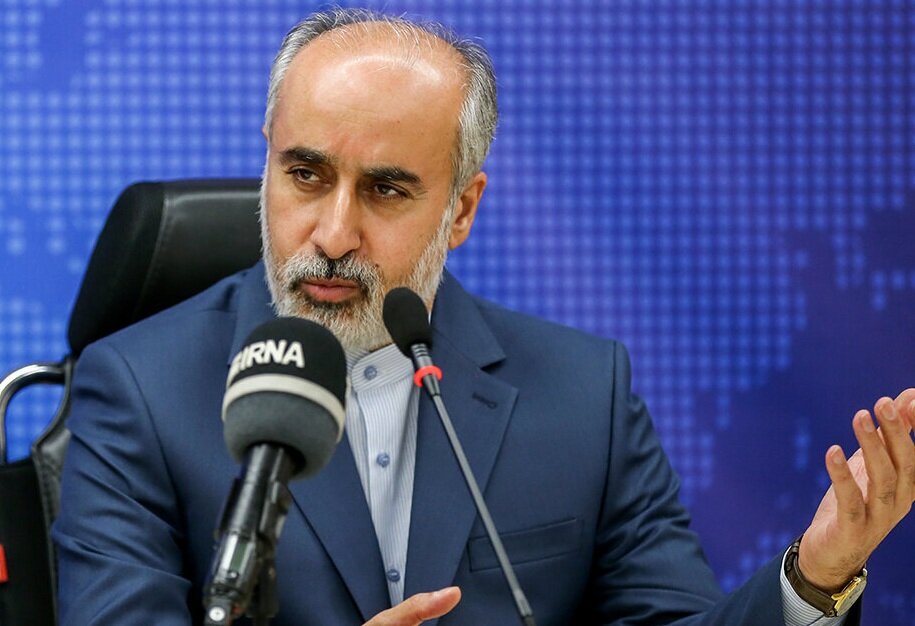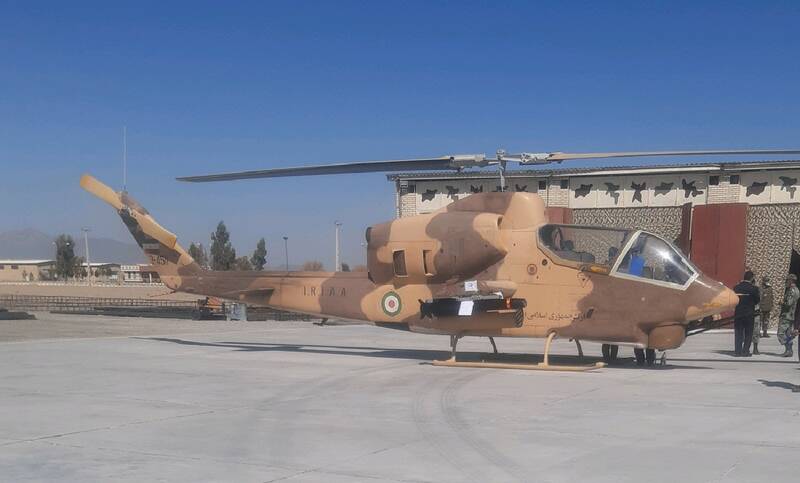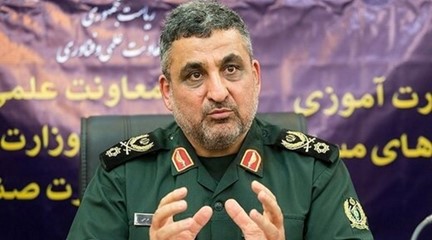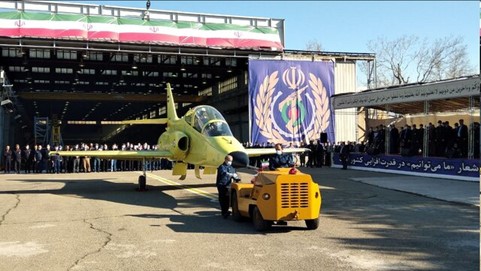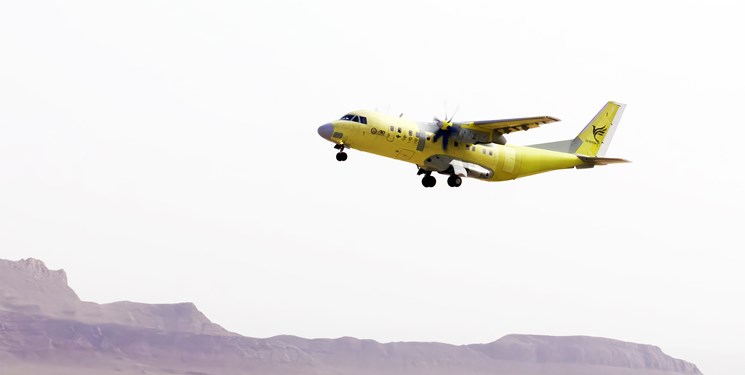
Iranian Defense Minister Mohammed Reza-Ashtiani meets with Abdul Karim Mahmoud Ibrahim
“The Simorgh demonstrates … the industrial maturity of the Ministry of Defense.”
The Iranian Aviation Industries Organization unveiled the prototype for its Simourgh [GRLCUT(1] transport plane in May 2022. The plane is named after the Simorgh, a mythical and benevolent bird mentioned frequently in Persian mythology and featured in the Shahnameh Book of Kings, Iran’s national epic. It is a name that the Iranian military has applied previously to missiles or satellites.[i] The excerpted article from Fars News Agency, which is affiliated with theIslamic Revolutionary Guard Corps (IRGC), suggests that the plane’s development is advancing as the Simorgh undertook a 20-minute test flight reaching an altitude of 8,000 feet at Shahin Shahr, about 15 miles north of Isfahan.
The Simorgh appears similar to the Ukrainian Antonov AN-140T, a decade-old platform designed to use rough or unprepared airstrips. The Iran Aircraft Manufacturing Industries Corporation, based at Shahin Shahr, began importing Antonov AN-140 [RG2] knock-down kits beginning 15 years ago, aiming to assemble approximately a dozen per year. The current Simorgh makes minor adjustments to the body, tail, and wings of the AN-140T, includes a cargo ramp, and can reportedly carry 6 tons of cargo.
Minister of Defense and Armed Forces Logistics Mohammad Reza Ashtiani’s claim that the Simorgh is indigenous is either an outright exaggeration or reflects successful reverse engineering and local production of AN-140 parts. A functioning local production line would enable Iran to sidestep problems with acquiring spare parts and could give Iran the opportunity to become a chief supplier of AN-140T parts to other customers of the Ukrainian Antonov plant in Kharkiv—another source of hard currency for Iran. The production of the Simorgh transport plane may augment Iran’s regional ambitions as its nearly 1,300-mile range will enable Iran to shuttle cargo and troops to regional allies Syria, Lebanon, and Yemen. The Simorgh’s air ambulance capability also likely plugs a gap exposed by IRGC losses in the Syrian civil war.[ii]
Sources:
“Havapeyma-ye Trabari Simorgh ba Mavafeqit Peruz Kard” (The Simorgh Transport Plane Flew Successfully ),” Fars News Agency (news agency closely affiliated with the Islamic Revolutionary Guard Corps), 30 May 2023. https://www.farsnews.ir/news/14020309000919
The Simorgh transport plane, made by experts from the Aviation Industries Organization of the Ministry of Defense, successfully passed its flight test. This aircraft is a new design and is the initial aircraft of its generation. It is fully suited to the needs of the national and military apparatus. It also takes into account the weather conditions of the country, international standards and regulations. It was designed, produced and built by the efforts of our young experts working for the [Iran Aviation Industries Organization, owned by the] Ministry of Defense and knowledge-based companies. It was first unveiled in May 2022 in the presence of the Minister of Defense and the Vice President for Science and Technology.
Among the features of the Simorgh transport aircraft are its light weight, cargo space, flight radius, sustainability to climatic conditions, the ability of land and take-off on short runways, agility and speed, allow it not only to be a transport craft but also an air ambulance. The design and construction of this aircraft do several things. It saves significant foreign exchange [due to its local production], creates employment, demonstrates both the realization of the resistance economy and the technological and industrial maturity of the Ministry of Defense, and finally shows the integration of national capacities to produce a strategic and technological product. It accelerates the country’s air force and ushers the armed forces into the club of heavy and ultra-advanced aircraft manufacturers.
Notes:
[i] For cursory discussion of the Simorgh rocket, see: Michael Rubin, “Zuljanah: Iran’s New Solid-Fuel Rocket” OE Watch, March 2021. https://community.apan.org/wg/tradoc-g2/fmso/m/oe-watch-past-issues/368233/download. For discussion of the Simorgh satellite, see: Michael Rubin, “Iran’s Simorgh Satellite Ready for Launch,” OE Watch, August 2018. https://community.apan.org/wg/tradoc-g2/fmso/m/oe-watch-past-issues/241432/download
[ii] For example, see: Michael Rubin, “IRGC Conducting Training by Fire in Syria” OE Watch, April 2017. https://community.apan.org/wg/tradoc-g2/fmso/m/oe-watch-past-issues/195917/download
Image Information:
Image: Iranian Defense Minister Mohammed Reza-Ashtiani meets with Abdul Karim Mahmoud Ibrahim, Chief of General Staff of the Syrian Army, 10 May 2023
Source: https://media.farsnews.ir/Uploaded/Files/Images/1402/03/09/14020309001000_Test_PhotoN.jpg
Attribution: Fars News Agency


